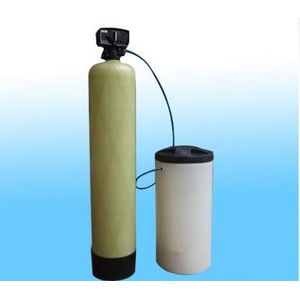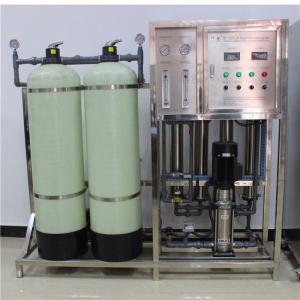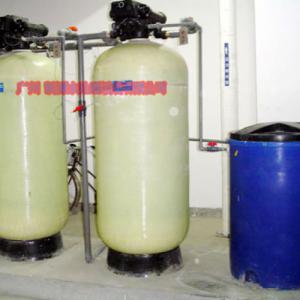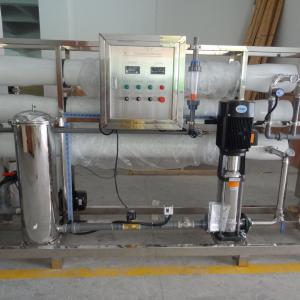reverse osmosis membrane equipment
Auto and manual wash
Auto power on and power off
Short circuit protection

Parameter:
| Model No. | Capacity (M3/H) | Power (kw) | Recovery Rate (%) | Total land area LX W X H (mm) |
| RO-250 | 0.25 | 1.5 | 50 | 2500X1000X2800 |
| RO-500 | 0.5 | 1.5 | 50 | 2500X1000X2800 |
| RO-1000 | 1 | 2 | 50 | 3500X1200X2800 |
| RO-2000 | 2 | 4 | 50-60 | 6500X1500x2800 |
| RO-3000 | 3 | 4.5 | 55-65 | 7500X1500X2800 |
| RO-4000 | 4 | 6.5 | 55-65 | 7500X1500X2800 |
| RO-5000 | 5 | 11 | 60-70 | 10000X2500X3500 |
| RO-6000 | 6 | 11 | 60-70 | 10000X2500X3500 |
| RO-8000 | 8 | 18 | 60-70 | 10000X3500X3500 |
| RO-10000 | 10 | 20 | 60-70 | 10000X4000X3800 |
| RO-20000 | 20 | 30 | 70-75 | 15000X5000X5000 |
| RO-30000 | 30 | 40 | 70-75 | 20000X6000X5000 |
| RO-50000 | 50 | 50 | 70-75 | 30000X8000X5000 |
Standard parts on the machine:
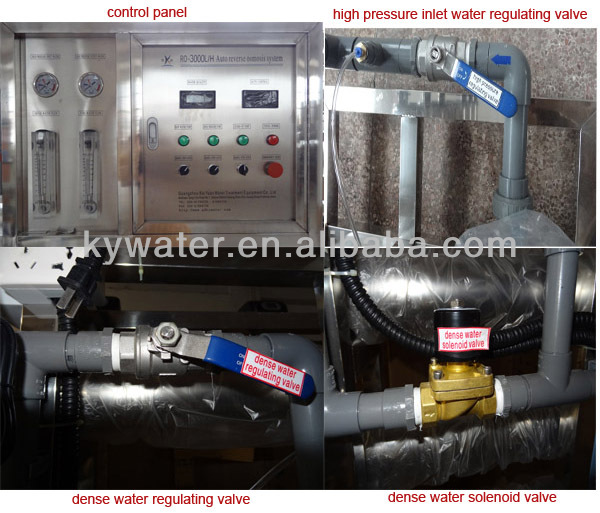

Chart Flow

Technical process:
Raw water→ Raw water Pump→ Sand filter→ Active carbon filtration tank→ Ro system→Ozone generator → Pure water tank
Working Process |
1. Raw water pump-- provide the pressure to quartz sand filter/active carbon filter |
2. Sand filter-- get rid of turbidity, suspended matter, organic matter, colloid, ect. |
3. Active Carbon filter--Remove the color, free chloride, organic matter, harmful matter, ect. |
4. Softener--exchange "ions" of calcium and magnesium with the most common and easiest method. |
5. Security filter--prevent large particles, bacteria, viruses into RO membrane, accuracy is 5um, |
6. High pressure pump-- Provide the high pressure to RO membrane |
7. RO system-- main part of the plant. The RO membrane's desalting rate can reach 99%, removing over 99% ions |
Brief Introduction To The RO Water Treatment Machine
Water purification is the removal of contaminants from untreated water to produce drinking water that is pure enough for its intended use, most commonly human consumption.Substances that are removed during the process of drinking water treatment include suspended solids, bacteria, algae, viruses, fungi, minerals such as iron, manganese and sulphur, and man-made chemical pollutants including fertilisers.

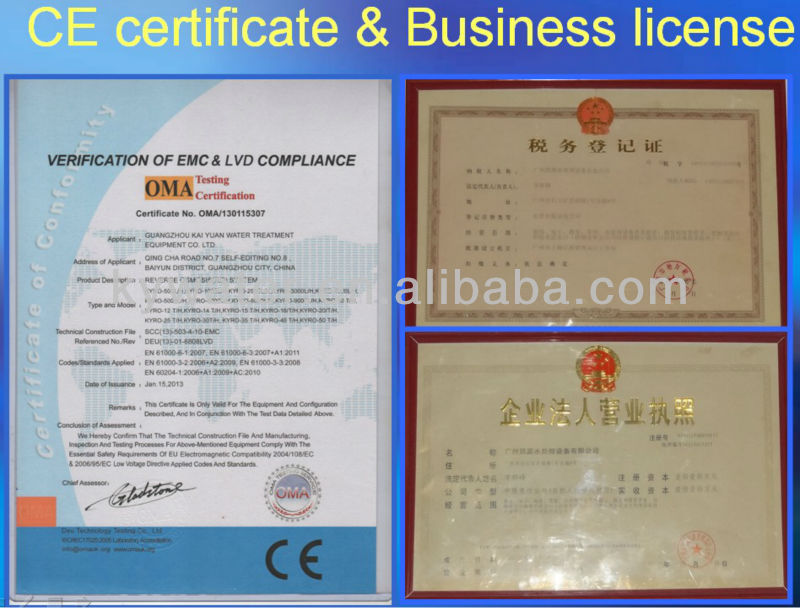
Company Web: http://www.kywater.en.alibaba.com/
If you are interested in our products, please feel free to contact us!
reverse osmosis membrane equipment
Our products are sold well not only in domestic, but also in UAE, Saudi Arabia, South Africa, Latin-America, Peru, Kazakhstan, Sri Lanka, Vietnam, Haiti, Spain, Australia, Nigeria, Uganda, New Caledonia, Ecuador, Sudan, Guatemala, Somalia, Cameroon, Malaysia ,Ghana, Lebanon etc. countries.

Guidelines for getting a proper quotation
- Tell us the raw water/source of water
- Provide water analysis report
- Required production capacity( 500 liters per hour, 1000liters per hour…)
- What’s the pure water used for( drinking, bottle water or industrial use…)
1) What is water purification?
2) What is the hardness of Kaiyuan's drinking water?
3) Is it beneficial to have minerals in drinking water?
4) When do we need to add a UV light to our system?
1)Q:What is water purification?
Water purification generally means freeing water from any kind of impurity it contains, such as contaminants or micro organisms.
Water purification is not a very one-sided process; the purification process contains many steps. The steps that need to be progressed depend on the kind of impurities that are found in the water. This can differ very much for different types of water.
2)Q: What is the hardness of Kaiyuan's drinking water?
A: Hardness is a measure of the amount of minerals, i.e. calcium and magnesium, dissolved in water. The average hardness of water is 150mg per liter.A:Hardness is a measure of the amount of minerals, i.e. Calcium and magnesium, dissolved in water. The average hardness of water is 150mg per liter.
3)Q: Is it beneficial to have minerals in drinking water?
This is actually the biggest myth in the water industry. To understand the issue clearly, first we need to examine “what minerals” are in our tap water. If we were to send a sample of water to a testing laboratory, we would get back a report that includes calcium, magnesium, and sodium along with a list of other minerals and contaminants. While some of these mineral are safe and benign, there are also many toxic ones on this list including fluoride, arsenic, chromium and radium just to name a few. Unfortunately there are no filtration systems available that can differentiate between good and bad minerals. Basic carbon filter systems will leave in all the minerals, including the highly toxic and radioactive ones. On the other hand, RO systems will remove 90-99% of these undesirable contaminants.
The truth is the majority of healthy minerals our bodies need come from the food we eat and not from drinking water. The main concern with water is actually over toxicity, not mineral content. Whether water contains 1 or 100ppm (parts per million) calcium isn’t really important, but the difference between 1 and 100ppm arsenic is of grave importance.
4)Q:When do we need to add a UV light to our system?
The primary use for a UV light is to disinfect filtered water at a certain flow rate. Bacteria, viruses, and other microorganisms are destroyed by the UV interfering with the DNA and RNA in the organisms' reproductive cycles.
If you are on well water, or if you suspect your water source is unsafe and want to have extra protection, then you can add a UV light to ensure safe drinking water.
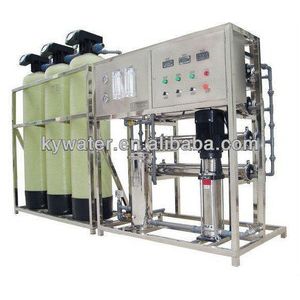
 China
China